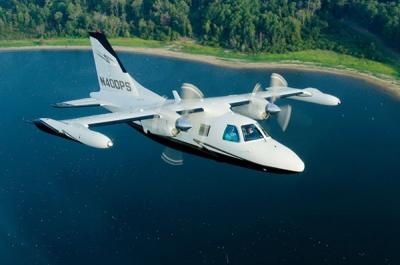Senator's Son Reported Problems With The Airplane Before The Accident
The NTSB has issued its preliminary report in an accident November 10 that fatally injured Dr. Perry Inhofe, the son of Oklahoma Senator James Inhofe.

According to the report, on November 10, 2013, about 1546 central standard time, a Mitsubishi MU-2B-25 twin-engine airplane, N856JT, impacted wooded terrain while maneuvering near Owasso, Oklahoma. Dr. Inhofe, a commercial pilot, who was the sole occupant of the airplane, sustained fatal injuries. The airplane was destroyed. The airplane was registered to Anasazi Winds, LLC, Tulsa, Oklahoma, and was operated by the pilot under the provisions of 14 Code of Federal Regulations Part 91 as a personal flight. Visual meteorological conditions prevailed for the flight, and an instrument flight plan had been filed. The flight departed Salina Regional Airport (SLN), Salina, Kansas, about 1500, and was en route to Tulsa International Airport (KTUL), Tulsa, Oklahoma.
According to preliminary air traffic control communications and radar data, the airplane was cleared to land on runway 18L at TUL, and the pilot was instructed to reduce the airspeed to 150 knots. The pilot acknowledged the clearance and speed reduction. Radar data showed the airplane on a straight-in approach to runway 18L. After the airplane passed the runway 18L outer marker, the airplane began a left turn. The air traffic control tower controller asked the pilot about the deviation, and the pilot reported that he had a control problem. The left turn continued, and the controller then cleared the pilot to maneuver to the west and asked if he needed assistance. The pilot informed the controller that the left engine was shut down. The controller then declared an emergency for the pilot and asked about the number of souls on-board the airplane and the fuel remaining. No further communications were received from the pilot. Radar data showed the airplane complete a 360-degree left turn near the runway
18L outer marker at 1,100 feet mean sea level, and then radar contact was lost.
Several witnesses observed the airplane in a shallow left turn; the reported altitudes ranged from 400 to 800 feet above ground level. During the turn, the landing gear was in the extended position, and one engine propeller appeared not to be rotating. The airplane continued in a left turn and the wings began to rock back and forth at a 10- to 15-degree bank angle. The airplane was observed to then make a right turn, followed by a left turn, and then a steep spiral to the left. The airplane disappeared from the witnesses' view as it descended.

The accident site was located in wooded terrain about 5 miles north of TUL at a global positioning (GPS) elevation of about 650 feet. The airplane came to rest upright on a measured magnetic heading of 109 degrees. The main wreckage area consisted of all major airplane structure and components. The left engine propeller blades were found in a feathered position. The landing gear was found in the extended position, and the flaps were in the 20-degree position. Postimpact fire consumed a majority of the fuselage and wing structure.
At 1553, the TUL automated surface observing system, located 5 miles south of the accident site, reported the wind from 140 degrees at 6 knots, visibility 10 miles, scattered clouds at 9,000 feet, temperature 19 degrees Celsius, dew point 6 degrees Celsius, and an altimeter setting of 30.26 inches of Mercury.
(Mitsubishi MU-2 pictured in file photo. Not accident airplane)
 ANN's Daily Aero-Linx (05.02.24)
ANN's Daily Aero-Linx (05.02.24) ANN's Daily Aero-Term (05.02.24): Touchdown Zone Lighting
ANN's Daily Aero-Term (05.02.24): Touchdown Zone Lighting Aero-News: Quote of the Day (05.02.24)
Aero-News: Quote of the Day (05.02.24) ANN FAQ: Contributing To Aero-TV
ANN FAQ: Contributing To Aero-TV NTSB Final Report: Cirrus Design Corp SR20
NTSB Final Report: Cirrus Design Corp SR20




